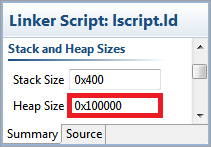 This version (04 Apr 2019 15:04) was approved by Istvan Csomortani.The Previously approved version (04 Apr 2019 15:00) is available.
This version (04 Apr 2019 15:04) was approved by Istvan Csomortani.The Previously approved version (04 Apr 2019 15:00) is available.
This is an old revision of the document!
The ADuM7701 is a high performance, second-order, Σ-Δ modulator that converts an analog input signal into a high speed, single-bit data stream, with on-chip digital isolation based on Analog Devices, Inc., iCoupler® technology. The device operates from a 4.5 V to 5.5 V power supply range (VDD1) and accepts a pseudo differential input signal of ±250 mV (±320 mV full-scale). The pseudo differential input is ideally suited to shunt voltage monitoring in high voltage applications where galvanic isolation is required.
The analog input is continuously sampled by a high performance analog modulator and converted to a ones density digital output stream with a data rate of up to 21 MHz. The original information can be reconstructed with an appropriate sinc3 digital filter to achieve an 86 dB signal-to-noise ratio (SNR) at 78.1 kSPS with a 256 decimation rate and a 20 MHz master clock. The serial input and output operates from a 5 V or a 3 V supply (VDD2).
The serial interface is digitally isolated. High speed complementary metal-oxide semiconductor (CMOS) technology, combined with monolithic transformer technology, results in the on-chip isolation providing outstanding performance characteristics, superior to alternatives such as optocoupler devices. The ADuM7701 device is available in both a 16-lead and an 8-lead wide-body SOIC and has an operating temperature range of −40°C to +125°C.
The provided HDL reference design support's both the ADuM7701 and AD7405 devices. One of the main difference between thees two devices is the type of the digital data lines. In case of ADuM7701 it is a single ended lines, and in case of the AD7405 is differential.
User can configure the corresponding interface type, by setting the adc_port_type Tcl variable in the system_project.tcl file. Note that this variable should be set before generating any bit file.
The output of the device is a continuous digital bit stream, to reconstruct the original input signal information, this output bit stream needs to be digitally filtered and decimated. A simple sinc filter is recommended to reconstruct the original input signal information received from the ADuM7701. The following equation describes the transfer function of the sinc filter:
where DR is the decimation rate and N is the sinc filter order. The implemented filter is a 3rd order sinc filter.
The output of the filter is connected to a DMA, which will handle the data transfer into the system memory. See the data path in block diagram bellow:
The external clock rate (MCLKIN) can be set in the system_bd.tcl file, by changing the value of the ext_clk_rate variable.

//#define XILINX #define ALTERA
| Function | Description |
|---|---|
int32_t adum7701_init(adum7701_dev **dev, adum7701_init_param init_param); | Initialize the device. |
int32_t adum7701_remove(adum7701_dev *dev); | Free the resources allocated by adum7701_init(). |
typedef struct { /* GPIO */ gpio_desc *dec_ratio; gpio_desc *filter_reset; } adum7701_dev; typedef struct { /* GPIO */ gpio_init_param dec_ratio; gpio_init_param filter_reset; } adum7701_init_param; |